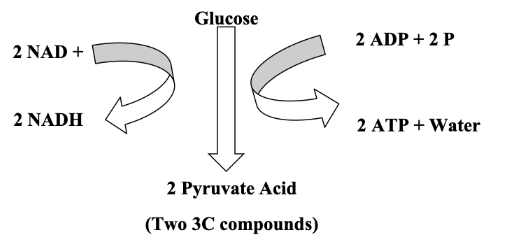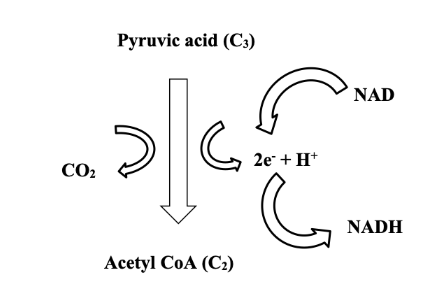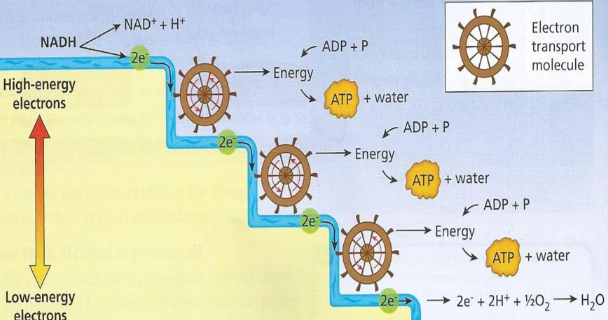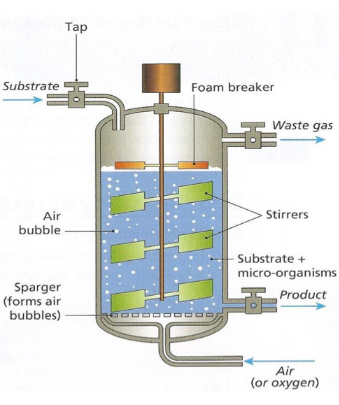Chapter 12: Respiration
C6H12O6 + 6O2 → 6CO2 + 6H2O + ATP
Conservation of Mass
In reactions matter is conserved. It is not created or destroyed it is rearranged to form new molecules. The number of atoms in the reactants will always equal the number of atoms in the products.
Energy released is stored as ATP (adenosine triphosphate) — which is the immediate source of energy in the cell.
Aerobic Respiration
The controlled release of energy from food using oxygen.
During aerobic respiration the high energy bonds in a substance (glucose) is released and used to make ATP. This ATP is further broken down and supplies energy for all metabolic reactions.
It occurs in two stages:
Stage 1 (Glycolysis)
Occurs in cytosol (cytoplasm minus living cell organelles).
Glucose is converted to a 3-carbon molecule called pyruvic acid, which results in the formation of 2-ATP molecules.

Results:
Glucose is partially broken down
Most energy is still stored in 2 3-carbon molecules
A small amount of energy is released and used to produce to ATP molecules
Stage 2 (Krebs Cycle)
Occurs in the lumen of mitochondria.
Large amount of energy is released.
If oxygen is present then the pyruvic acid enters the mitochondria.
Here it loses a carbon dioxide molecule to form a two-carbon molecule called Acetyl Coenzyme A.
While forming acetyl CoA it loses 2-high energy electrons and a proton (H*).
These combine with NAD+ to form NADH which enter into the electron carrier system.

Electron Transport Chain
The electron transport chain consists of a series of proteins that transfer NADH from one protein to another.
As the NADH is passed from one to another, energy in the NADH is released and is then used to from ATP.
This is done in a process called oxidative phosphorylation.
As the electrons move from one carrier to another they lose energy. At the end of the system, low energy electrons remain.
These low energy electrons are removed by combining them with oxygen and hydrogen.

Anaerobic Respiration
Also known as fermentation.
Does not use oxygen.
Occurs in the cytosol.
Releases a small amount of energy.
Initially breaks glucose into two 3-carbon sugars.
Types of Fermentation
Lactic acid fermentation in muscles and bacteria
Alcohol fermentation
Lactic Acid Fermentation
Lactic acid is produced when:
Bacteria cause milk to go sour
Silage is made
Bacteria act on dairy products to make cheese and yoghurt
Muscles dont receive enough oxygen and respire anaerobically, leading to lactic acid build up causing cramps and stiffness
Alcohol Fermentation
Alcohol fermentation is when the glucose in alcohol is broken into ethanol and carbon dioxide.
Micro-Organisms and Fermentation
Micro-organisms are placed in a bioreactor containing a suitable substrate on which they can react.
Bioprocessing
The use of enzyme controlled reactions to produce a product.
Bioreactor
A vessel or container in which living cells or their products are used to make a product.
Biotechnology
The use of living things or their components to manufacture useful products or to carry out useful reactions.
